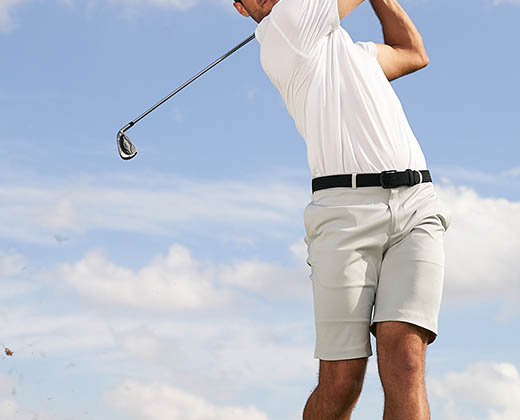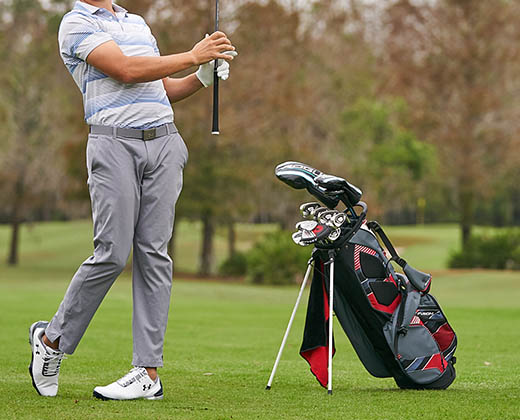Bryson DeChambeau on One-Length Irons
Learn why the professional golfer chose this style of iron and how it can help benefit your game.
Bryson DeChambeau does things a little differently on the golf course. One of the aspects that sets him apart on tour is the set of one-length irons in his golf bag.
Pro Tips spoke with DeChambeau about his decision to use one-length irons. He shared the benefits he has seen and why he thinks they can assist golfers of any skill level.
“These clubs can benefit literally everybody in the world,” DeChambeau says. “The problem is there’s a bunch of people who’ve played variable length [irons] for their whole lives. I get that. I understand that. But I truly believe that if you go pick these up, and you get the right fitting for you and the right head weight, the right swing weight, all those dynamics, the shaft flex, it can literally benefit everybody.”
ONE-LENGTH VS. VARIABLE LENGTH
In a traditional iron set, also known as variable length irons, there are different lengths. The irons become shorter as the numbers increase. For example, a 5-iron is shorter than a 3-iron. The length, along with the loft, of the club affects distance and trajectory.
On the other hand, one-length irons use other means to match the impact of length. Matching head weights is one of the ways that help one-length irons work. In a set of variable length irons, you’ll have varying head weight.
For example, a set of one-length irons are the length of a traditional 7-iron. However, every iron has a matching head weight of 270g. That means what would be higher irons in a traditional set have an increased head weight. And the irons that would be shorter in a variable length set have a lighter head weight.
“People think that length is the reason why it goes farther. Well, that is true. But if they had the same head weight on all the clubs, it would consistently go way too far with variable length. Variable length has to exchange the weight of the head for the length of the club,” DeChambeau explains.
Changing the loft also affects the distance of a set of one-length irons. The loft gapping on one-length irons is slightly larger than variable length irons. This helps keep the right distance gap between clubs.
“Loft is really the answer to this distance question,” DeChambeau says. “Four degrees of loft accounts for about 12 to 13 yards of distance when swung around 90 miles per hour.”
Learn more about choosing irons for your game with this Pro Tips guide.
BENEFITS OF ONE-LENGTH IRONS
Looking to improve your swing? One-length irons may be right for you. They can help reduce the variables that may affect your swing and minimize the potential for error. These irons may also help your stance, posture and ball position become more consistent.
“That’s really the reason I switched to it,” DeChambeau says. “I said, 'I want to be able to make sure I’m in the same posture each and every time I’m hitting every single shot.’”
A set of one-length irons can help keep you in the same posture no matter what iron you use. Many sets are the length of a standard 7-iron. However, some golfers will go with the length of a 6-iron or an 8-iron due to personal preference.
GETTING CUSTOM FIT
Before switching to one-length irons, it is crucial to have a club fitting. DeChambeau says this is the most important step in making the change. By visiting the in-store Golf PROS at DICK'S Sporting Goods, you can get paired with a custom-fit set of clubs tailored to your game.
Switching from variable lengths irons to a one-length set can be a major change for many golfers. But if the clubs are right for you, it can help lead to major changes on your scorecard.
DeChambeau has a different approach to the game than most golfers. Learn why he uses the arm-lock technique when putting and how this could help sharpen your short game. Also, discover how DeChambeau strengthens his golf game by putting down his clubs and picking up some weights with his workout tips.








